What jobs will flying robots be doing in future?
- Published
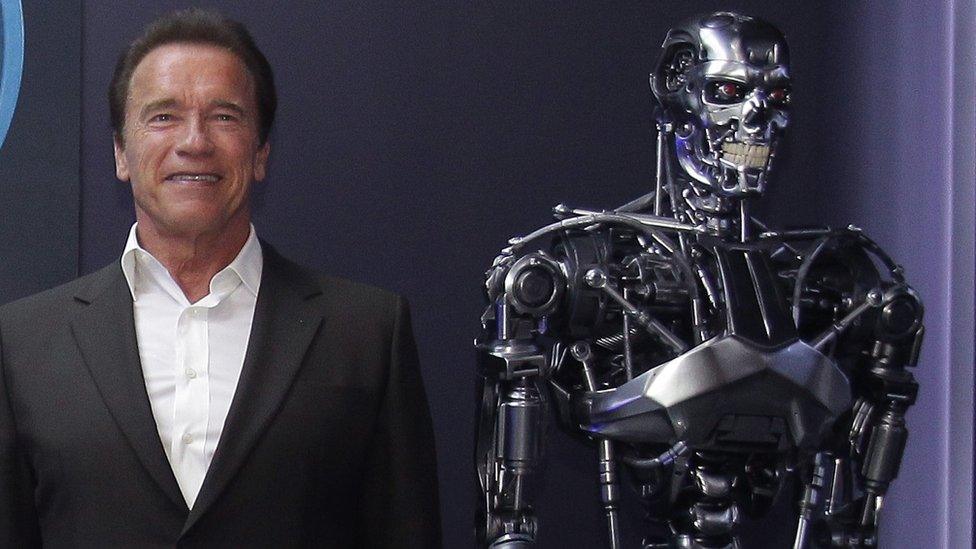
Arnold Schwarzenegger's Terminator franchise painted a dystopian picture of the robotic future
In the James Cameron blockbuster The Terminator and its follow up sequels, the world was ruled by machines.
Flying robots patrolled the skies while land-based vehicles with minds of their own trundled along on the ground below.
That future is fast becoming a reality.
But thankfully, instead of trying to wipe out humanity, these drones could soon be an indispensable component of our lives: building skyscrapers using 3D printing technology; transporting cargo across town; crop spraying; or helping find people trapped in buildings.
War and peace
Lockheed Martin, external's K-Max is a full size, unmanned helicopter, capable of both autonomous and remote-controlled operations.
Previously deployed in combat zones, it is now increasingly being used for civilian applications, from fire fighting, to heavy lifting and oil drilling.
And the firm's Aerial Reconfigurable Embedded System (Ares), external aircraft features rotating engines that allow it to take off and land vertically like a helicopter, but also fly fast like a conventional aeroplane.
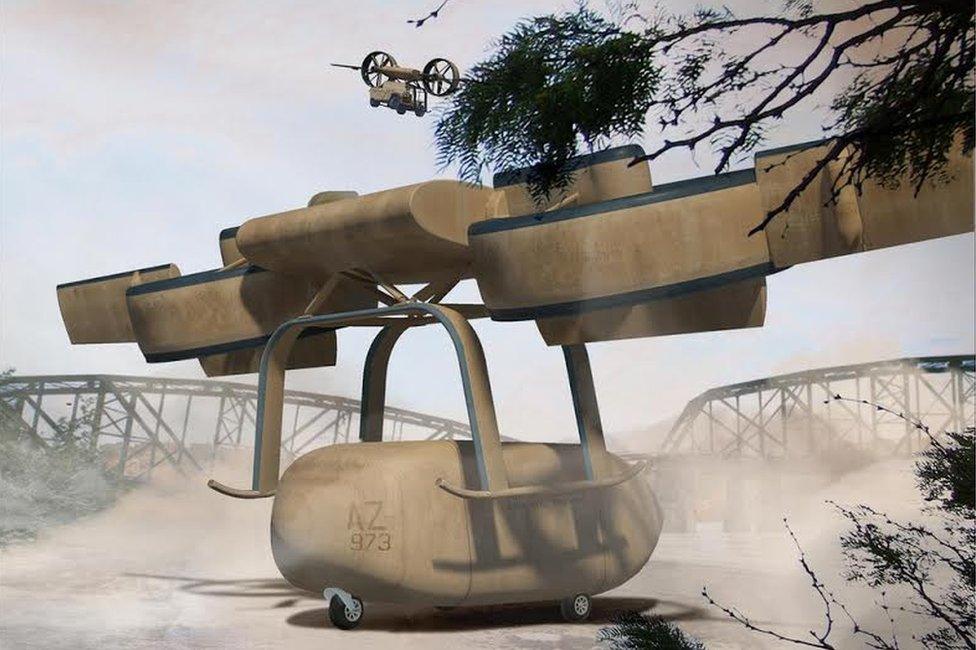
Lockheed Martin's Ares remote-controlled drone concept could carry pods for different purposes

Thunderbird 2, from Gerry Anderson's famous TV show, could also swap cargo pods
It's like "a real life Thunderbird 2", says Andy Horler, Lockheed Martin's new business development manager.
"It can carry lots of different types of pods under it. This allows the system to be used for a wide range of tasks, such as transporting personnel or carrying cargo or medical supplies," he says.
"From a business perspective, Ares could be used to reduce operating costs by sharing aircraft across different organisations, each with their own pod."
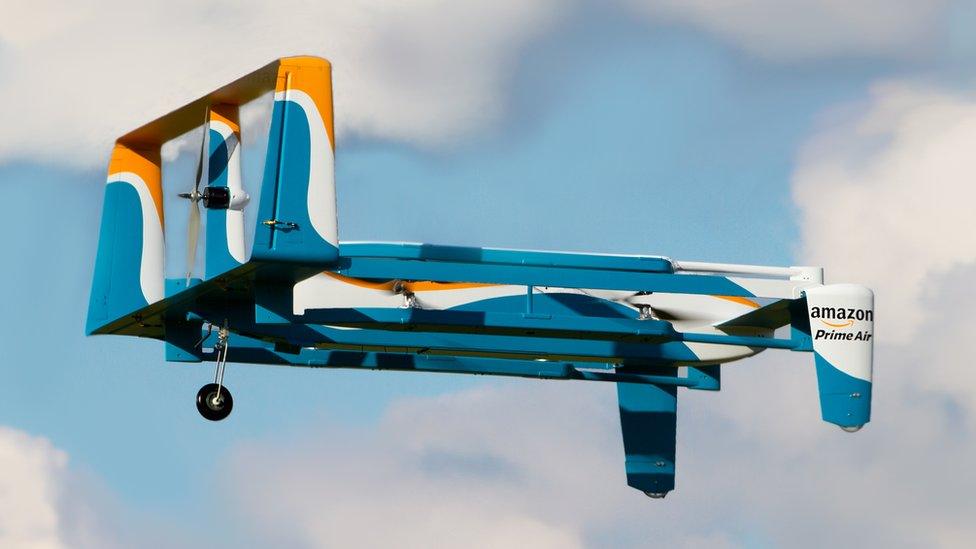
Delivery drones are feasible for small packages, but are they safe flying over urban areas?
Fire, police and ambulance services could all share a common pool of the aircraft, he believes. Ares is scheduled to begin flight tests next month.
Amazon has grabbed the headlines with its plans for delivery drones, but the Japanese government has also tested unmanned drone deliveries in a de-regularised zone in the city of Chiba.
The drones carried wine and milk from different points in the city to parks, businesses, and a residential building.
Singapore has also recently launched its own experiment in collaboration with Airbus.
Collaboration
When drones can collaborate, their impact could be even greater.
Lockheed recently tested an unmanned helicopter carrying and then dropping off an unmanned ground vehicle to conduct a resupply mission.
Singapore joins up with Airbus to study how to make drones useful
Mr Horler says: "This sort of collaboration could have been used during the recent Ebola crisis [in West Africa] to reduce the risk of the disease spreading by safely stretchering patients out of the contamination zone."
And Dr Mirko Kovac, external and his team at the department of aeronautics at Imperial College, London, envisage drones communicating with each other and an AI network as part of a complete ecosystem.
"They'll sense the environment, detect water quality and pollution levels, respond to emergencies, inspect structures and buildings," he says.
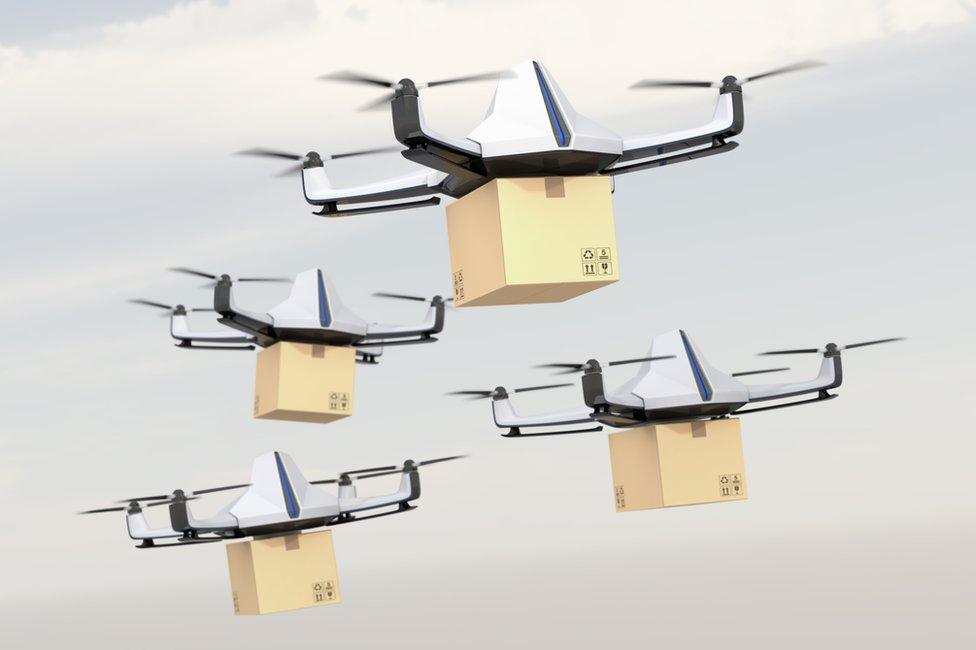
Delivery drones will need to avoid each other and stick to flightpaths
"They'll also be used to detect and repair gas leaks from pipelines and maintaining buildings, and eventually to construct those buildings."
Dr Kovac's team is also developing aerial construction-bots equipped with 3D printing technology that will excrete materials for use in building and repairing structures.
Line of sight
Authorities are naturally wary of drones flying into places they shouldn't and generally causing havoc - particularly near airports. So they usually stipulate that pilots have to maintain line of sight.
But French company Uavia, external has developed tech that allows unmanned vehicles to be controlled remotely using cloud-based technology.
In recent tests, the firm was able to fly a drone in San Francisco from its base in Paris.
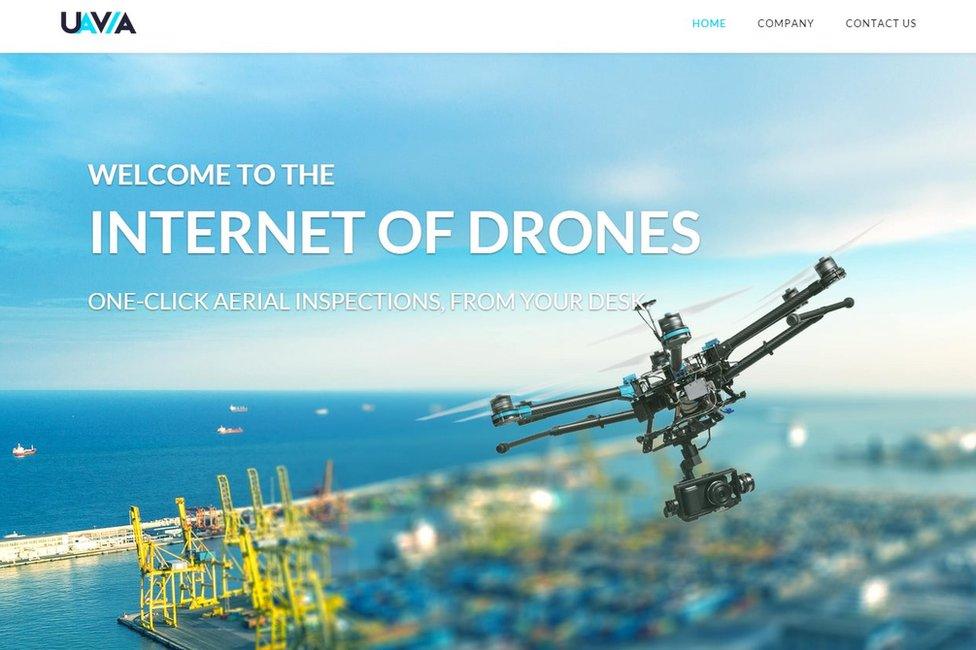
Uavia is planning for a future when drones can be operated from anywhere in the world
"We are currently working with large companies in France and we will be launching our first suite of products later this year," says Clement Christomanos, Uavia's co-founder and chief executive.
"We fly multi-rotor drones nearly every day for beta-test purposes. These are flown at our research and test site, and controlled from our headquarters 500km away in Paris, with nothing but a laptop and our web application."
The technology offers the prospect of companies being able to carry out inspections of electricity cables, gas pipes or other infrastructure networks much more cheaply.
Power problem
But for this drone ecosystem to become a reality, a number of challenges have to be overcome.
The main one is power. If they're to stay aloft for significant periods new methods of keeping them fuelled need to be found - electric batteries just don't cut it, with most flight times lasting under an hour.
WATCH: A hydrogen-powered drone fly
When those drones start carrying heavy payloads, the flight times fall dramatically.
So UK firm Intelligent Energy, external has developed a hydrogen fuel cell-powered range extender that can keep them aloft for up to two hours at a time.
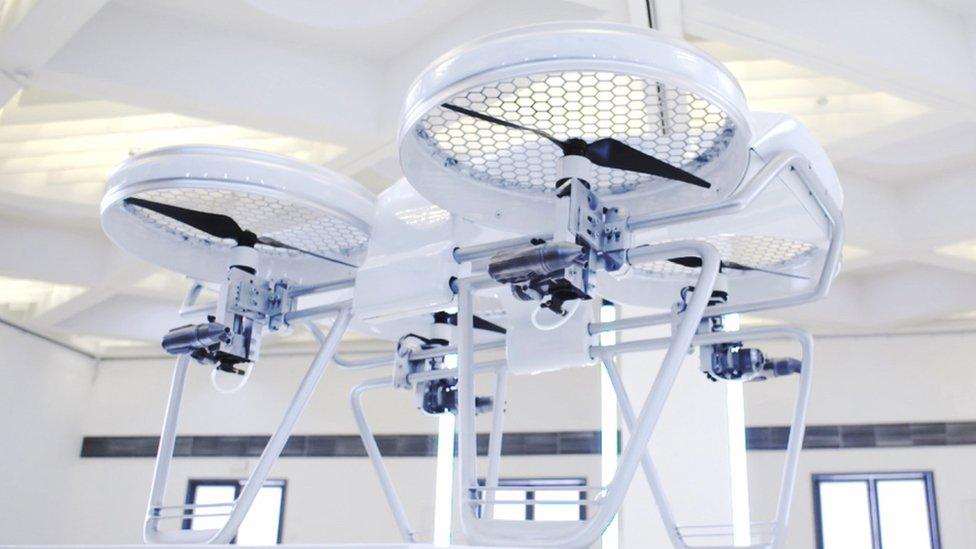
Could Yeair's traditional combustion engines improve the drone's range?
And German start-up Yeair, external has launched a successful Kickstarter campaign to fund development of its combustion engine-powered drone that can fly for up to an hour and travel at up to 62mph (100km/h) carrying 5kg.
Google and Facebook are developing "wifi delivery" drones with large wingspans that could stay aloft for long periods using solar power and rechargeable electric batteries.
Traffic management
The other big issue is how all these drones will be able to fly around without crashing into each other and potentially injuring people below.
US space agency Nasa's Unmanned Aircraft System Traffic Management (UTM) project, external aims to monitor and direct drones flying at low altitudes without the need for a human controller.
Nasa and US Federal Aviation Administration operators recently flew 22 drones simultaneously using the UTM system.
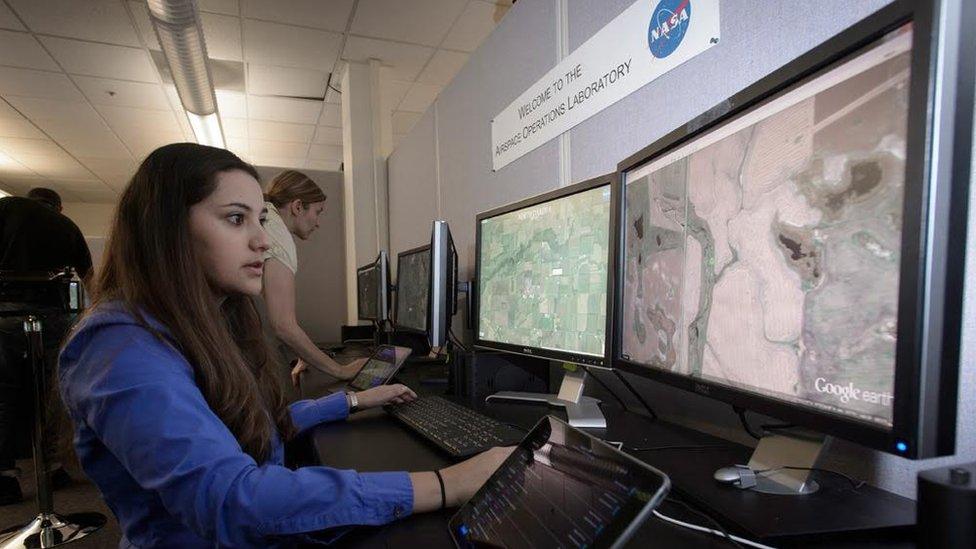
A Nasa operator monitors the skies during testing of its drone management system
During the tests the system was able to recognise live and virtual aircraft and respond by sending messages and alerts to the drones.
But while drone "sense and avoid" technology is developing rapidly, regulators will need a lot of convincing before allowing aerial motorways above dense urban areas.
This isn't stopping investors piling into this sector, however.
The commercial drone market is already valued at more than $127bn (£88.5bn; €112bn), according to a study by accountancy firm PwC, with infrastructure, agriculture and transport industries accounting for the bulk of the market.
The FAA has issued more than 3,100 commercial drone permits, and unmanned aerial vehicles are now cleared to fly commercially in all 50 states as well as Puerto Rico.
Flying, intelligent robots may be buzzing our way sooner than we think.
Follow Technology of Business editor Matthew Wall on Twitter @matthew_wall, external